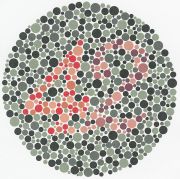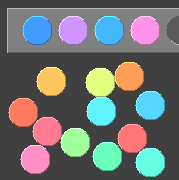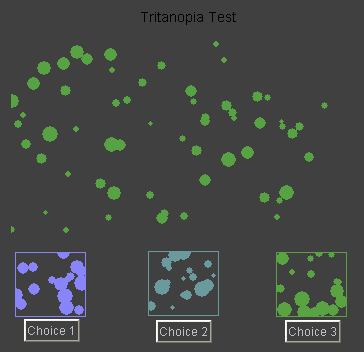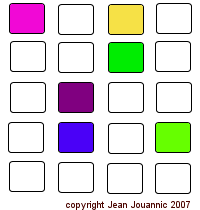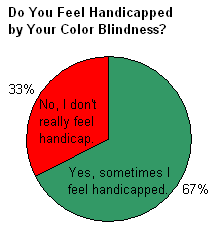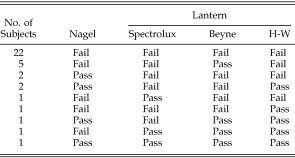When your child starts to learn colors the question of color blindness often arises. Does your child understand the colors correctly? He or she is mixing some colors or can’t name them correctly. Is this color blindness or is it just to early to know?
Many mothers and fathers ask if their son or daughter has a color vision deficiency. Here are some example questions of anxious parents:
- My son has a hard time with red and yellow. Could my 3 years old be colorblind?
- Is it too early to tell if my 2 1/2 years old son has problems with colors?
- When should we test our son for color blindness?
Usually it is all about sons. Because of the inheritance pattern of color blindness, males are by far more often colorblind.
I would like to tackle the question about a possible color vision deficiency of your child with the following three points:
- Development of color vision in children.
- When to test your child for color blindness.
- Why you should check the color vision of your child.
Before I get into the details of the above three topics I would like to say a few words about color blindness itself. In each school class there is on average one colorblind child. Red-green color blindness is the most common form while the terminology is misleading. Every normal colorblind person has a very colorful visual spectrum—just a bit less colorful. This can range from almost the same vision as non-colorblind people to a quite reduced sensation of colors, but still a colorful one.
Only if you have a complete color blindness you would have monochromatic vision. This would allow you to see shades of gray but you couldn’t perceive any real colors at all. This type of color blindness only affects one out of more than 30’000 people and you would recognize it already at a very young age.
1. Development of color vision in children. At the beginning a newborn has to develop its vision. Only after a few weeks a baby can recognize high contrasts in colors like black and white. Color vision evolves steadily and at the age of about six month they have full color vision.
At the age of two a child starts to match colors. They can give you for example a block of the same color you’re holding in your hand. As colors can be matched they still can not grasp the naming of colors yet. This starts at about the age of three years. Only then your boy or girl will name the some main colors correctly.
And it will take another one to three years to name colors accurately. It is said that a child has developed normal color naming between the age of four and six years.
2. When to test your child for color blindness. As we learned in the above section that color vision and color naming evolves slowly the question arises, when is the best moment to test your child for a possible color vision deficiency.
First of all you shouldn’t just check your child for color blindness if there isn’t any evidence for a possible color vision deficiency. It wouldn’t really help you because there is also a possibility that a color blindness test shows a deficiency if there isn’t any. So if you have some evidence, when should you test?
Test for color blindness just before your child will enter kindergarten.
Most of you will ask now, why shouldn’t I test earlier if my son or daughter shows problems with color matching and color naming? I would like to give you a few arguments, why you shouldn’t test earlier.
- Before kindergarten-age your child might not have developed complete color naming abilities.
- You shouldn’t push to hard on such things like color vision. Give your child time to learn and understand the concept of colors.
- Don’t make yourself crazy with a possible and often wrong diagnosis of color blindness of a very young child.
- Try to understand your child and don’t try to analyze everything. This way you will understand your child much better and you will be able to help him or her much better.
- It won’t really help your child and you if you know to early about its color blindness. Because your child will not really understand it or he/she will already feel like “having a handicap”.
3. Why you should check the color vision of your child. As I said before, don’t just check in anyway but only if there is some evidence. But if you think your boy might be colorblind, let him check or try some of the online color blindness tests.
And why? Because this way you will learn more about his color vision ability AND know his main problem colors (like red and green) AND last but not least you will understand and learn how to support him and can pass this knowledge on to his teachers.
Even if there is one colorblind child per class on average most teachers are not aware of color vision deficiency and most often don’t know how to handle it. They either don’t know what they can do to help a colorblind child or don’t know the colorblind children in their classes.
If you know about the color blindness of your son, you can not only support him but also help others to understand his vision and how they can help him.
Picture taken by Leonardo Sagnotti – some rights reserved.


